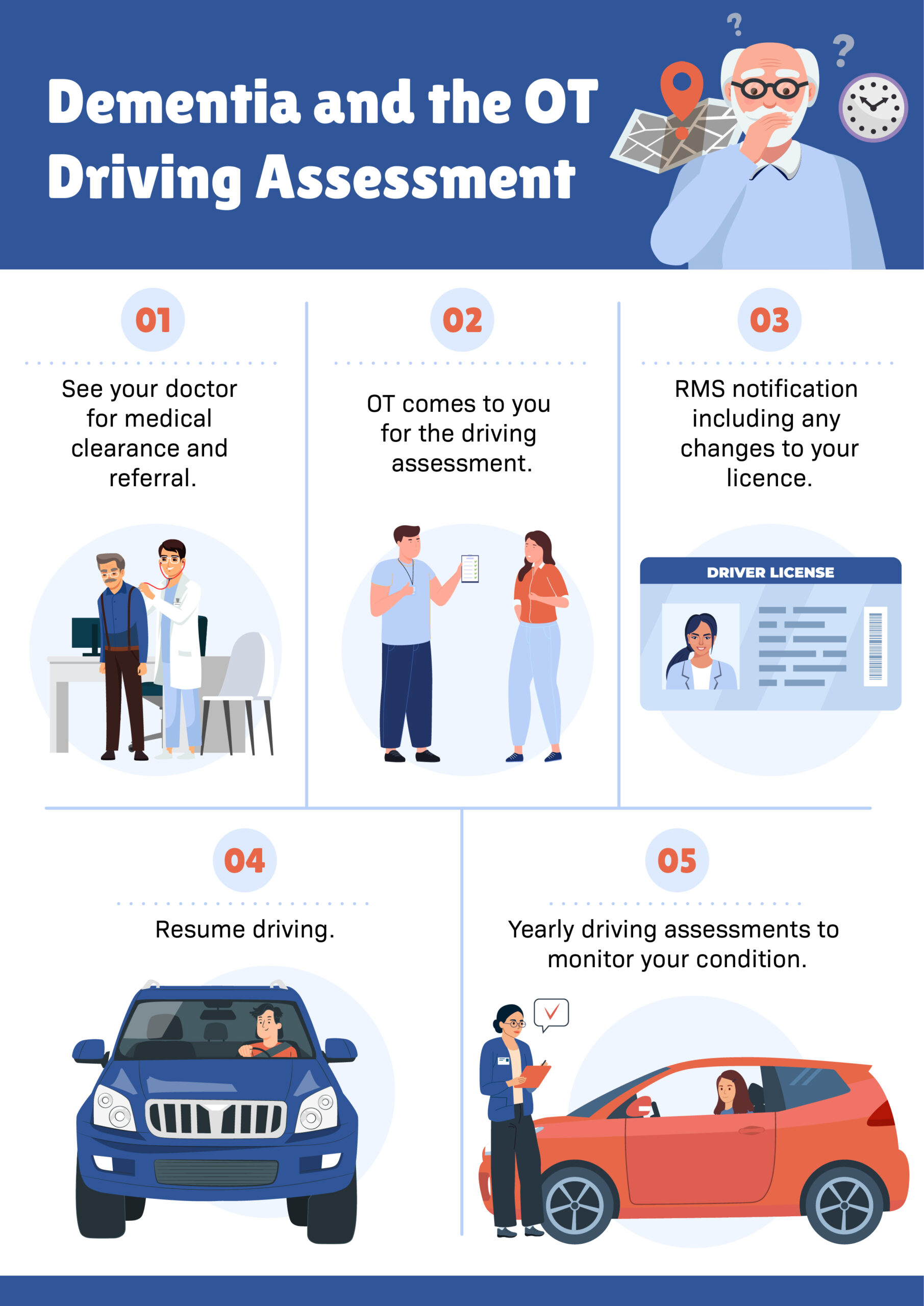Dementia and its causes
Dementia is a progressive neurological condition that affects the way a person thinks and behaves. The condition is characterised by a group of symptoms that cause disorders in a person’s brain, resulting in cognitive impairment, behavioural disturbances and the general ability of the person to complete a simple to even the most complex task, such as driving with dementia.
It disrupts a person’s level of functioning to the point of seriously impacting their health, daily functioning, and quality of life. While dementia is commonly seen in older adults (after 65 years of age), younger people may also develop symptoms that are not considered to be a regular part of the aging process. Some older people in their 40s may develop the condition.

As established, dementia is a specific group of symptoms; thus, each of these types of dementia has its own causes.
The most common types of dementia include:
- Alzheimer’s disease
- Huntington’s disease
- Korsakoff’s Syndrome (alcohol-related)
- Lewy bodies dementia
- vascular dementia
Looking to assess your driving ability? Contact us to book a consultation.
Driving with dementia
Once significant concerns have been raised about a person possibly exhibiting signs of dementia, the health professional will commence medical investigations to determine a firm diagnosis. A dementia diagnosis (or concerns about someone having the condition) does not automatically result in driving cessation, but there is a process involved to discover if the person can continue to drive safely.
In NSW, any medical condition or disability that potentially impacts a person’s capacity to operate a car must be declared to the RMS (Roads and Maritime Services). This includes a diagnosis or a serious concern of dementia or other cognitive impairment issues. Because the condition is degenerative and progressively worsens over time, there will likely be a point when the person cannot safely continue to drive. It is important to have this conversation with the person and provide them with ongoing support.
To determine a person’s ability to operate a vehicle, the following procedure is required:
- A comprehensive cognitive assessment is administered to the client, which explores the person’s attention, concentration, insight, judgment, memory, problem-solving and visuospatial (spatial awareness) skills.
- The person’s doctor also fills out the RMS ‘fitness to drive’ paperwork to indicate the medical opinion about their current capacity to continue driving with dementia. In this form, the driver’s doctor will often recommend that the person undergoes an Occupational Therapy (OT) driving assessment.
- Because the health care provider offers the important role of observing the person’s ability to operate a car in a practical sense, a Driver Trained OT is qualified to make this assessment.
- The OT formal driving assessment is the approved method by the RMS to explore a person’s medical fitness to operate a vehicle following concerns or a diagnosis of the condition.
The first phase of the assessment involves examining the person’s current cognitive level of functioning. During our assessments, we administer the Drive Safe Drive Aware screening tool (DSDA). For example, tests such as DSDA can be used to figure out if the current cognitive symptoms of dementia may be affecting the person’s essential cognitive vehicle operation skills. This could include short-term memory, decision-making, divided attention skills (multi-tasking) and spatial awareness. The assessment also involves assessing the person’s visual acuity and physical condition in relation to operating a car. If there is ambiguity in the off-road cognitive assessment, an on-road driving test is required.
On road assessment
Although it is impossible to standardise an on-road assessment, there are key driving behaviours our Occupational Therapists observe when conducting the evaluation. These include:
- Observation
- Speed Control
- Planning and Judgement
- Vehicle positioning
- Reaction time and physical control
This assessment focuses specifically on the individual’s driving with dementia and the symptoms that are currently observed to be affecting the person’s physical ability to operate a vehicle. Minor errors that are related to poor driving habits, anxiety regarding the testing conditions, or because the person is not familiar with the instructor’s car generally will not negatively affect the outcome of the assessment. However, major errors that potentially cause an accident or collision (if not for the instructor’s intervention) may result in an unfavourable outcome for the individual.
On road assessment and driving with dementia
Although dementia affects people in different ways, there are common symptoms that prevail that pose a risk to themselves and others when they drive. These symptoms are as follows:
- Memory loss
- Gradual impairment in automatic responses (e.g. increased confusion at roundabouts)
- Impaired speed of information processing resulting in driving at 10-15 km/hr below the speed limit
- Difficulty switching attention with selective attention
- Reduced visuospatial awareness, e.g. difficulty judging safe gaps in traffic, poor road position
- Reduced visual fields
- Difficulty making decisions in complex traffic conditions
- Confusion
- Disorientation Inability to recognise familiar environments
- Many other symptoms
It is important to note that as there is no current cure for the condition, as the disease progresses, serious consideration needs to be taken about driving with dementia. Ongoing medical monitoring, assessment and regular OT formal driving assessments will be necessary to ensure the person remains safe before continuing to operate a car. For the vast majority of patients out there, a decision will need to be made at some point about ceasing vehicle use.
If you have any questions regarding dementia and driving, please speak to our team today to get started.


